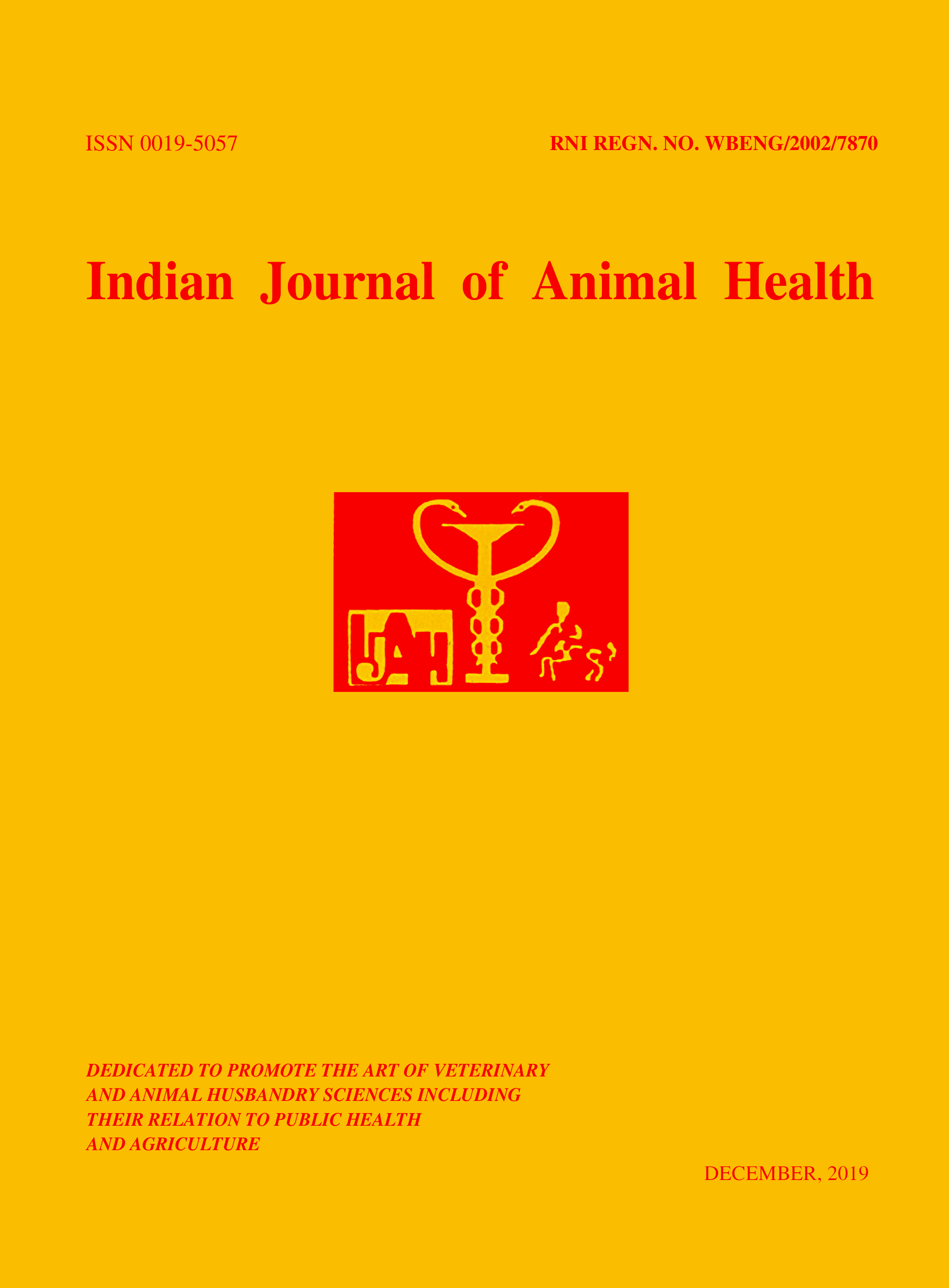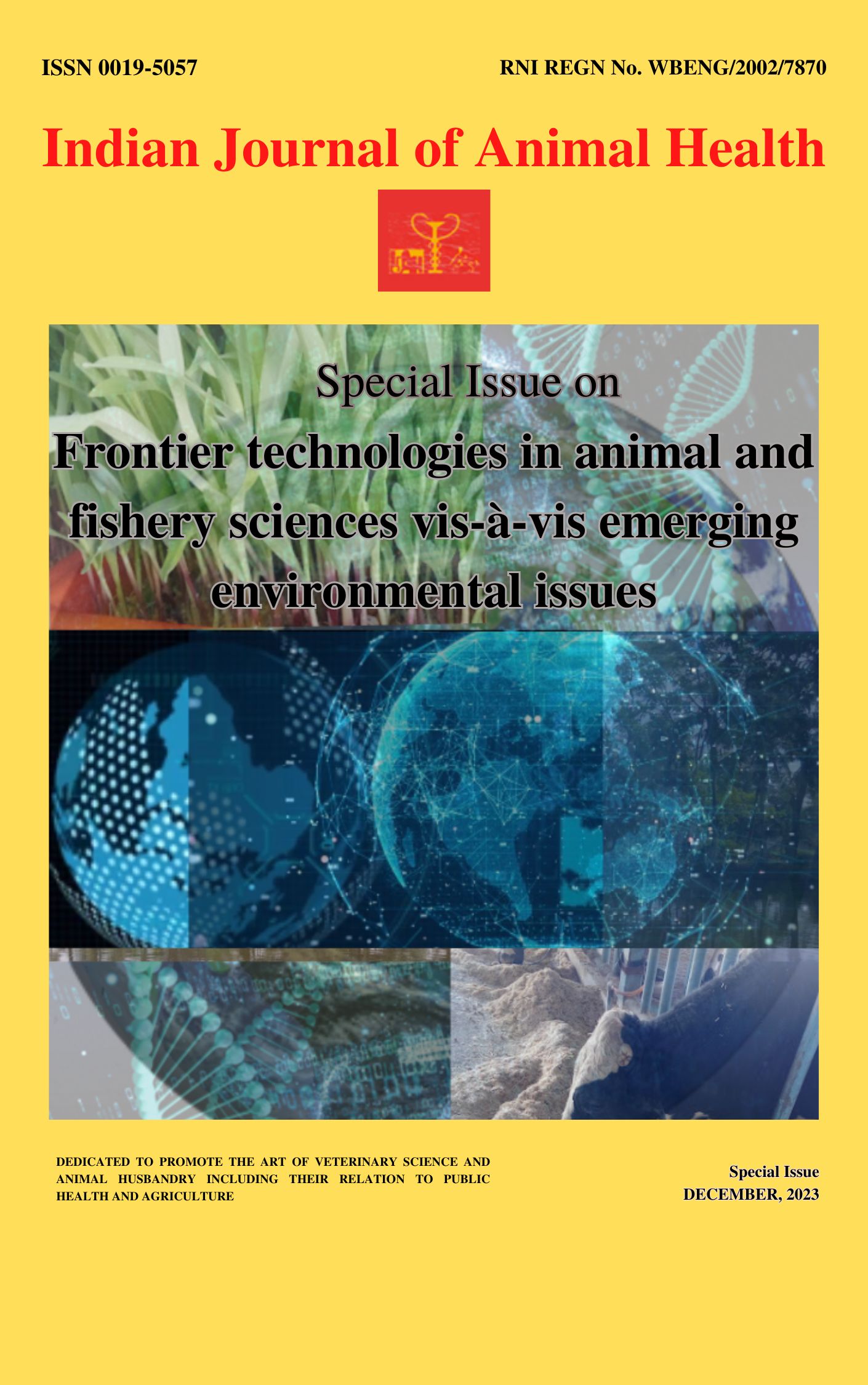West Bengal Veterinary Association :
If you would like to visit the West Bengal Veterinary Association's website, Click here...

User counts
194389 visits
PUBLISHER: Dr. Subir Kumar Basu
Address:West Bengal Veterinary Association, 68, Kshudiram Bose Sarani, Kolkata- 700037, West Bengal, India
Email: ijahwbva2010@gmail.com
Telephone: +919051585341
Welcome To Indian Journal of Animal Health
Indian Journal of Animal Health is a scientific journal on veterinary research & clinical trial was first published in 1962 from Calcutta, West Bengal by no less than a pioneer like Late Dr. Anupam Chatterjee, the undisputed leader and thinker of Animal Husbandry Development in West Bengal. Great teachers and researchers like Dr. D.B. Mukherjee, Dr. M.S.Das, Dr. A.N.Chakraborty, Dr. P.K.Sinha adorned as members of the Editorial Board of the Journal from time to time.
Aims & Scopes
1. To publish standard research works from different Institutions and Universties and to bring the latest information about the advancement of Vet erinary Science to the door step of end users.
2. To publish innovative clinical trials of Veterinary practice.
3. To promote the art of Veterinary & Animal Husbandry sciences including their relation to Public health & Agriculture.
Devoted effort of Dr. Anupam Chatterjee is immemorial. Later, Late Dr. Chatterjee handed over the management of the Journal in the year 1987 and since then the Journal is being published by West Bengal Veterinary Association (State affiliate of Indian Veterinary Association) under technical guidance of competent Advisor Board constituted by eminent scientists, research workers in the field of Veterinary and Allied Sciences



